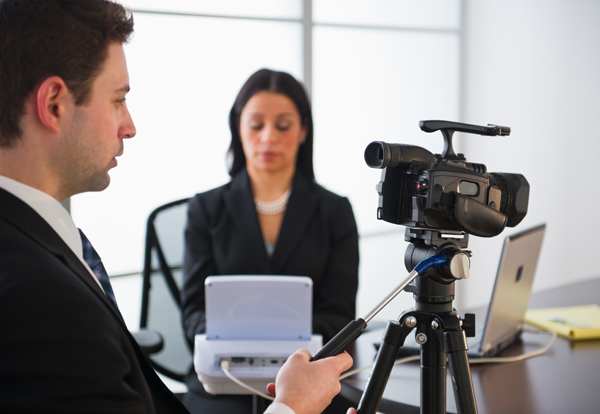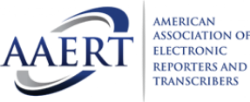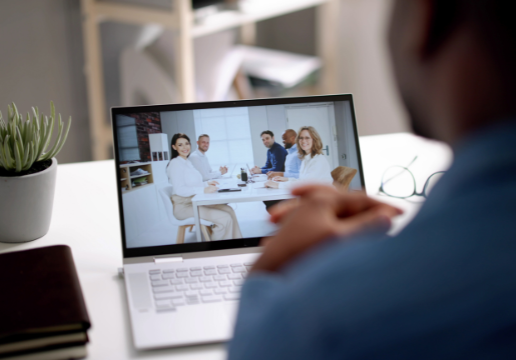Legal Videography: Enhancing Communication Between Lawyers and Clients
Legal Videography: Enhancing Communication Between Lawyers and Clients
Blog Article
Why Legal Videography Is Critical for Accurate Court Recordings
The duty of legal videography in court room setups can not be overemphasized, as it works as a necessary tool for preserving the integrity of court records. By capturing both spoken and non-verbal interaction, it enhances the clarity of witness testaments and reflects the nuances of court interactions. This thorough paperwork not only help in lowering possible misunderstandings yet additionally supports appellate testimonials, thus strengthening the judicial procedure. Nonetheless, the effects of integrating legal videography into typical courtroom techniques raise important concerns about its more comprehensive influence on the legal system. What might these implications entail?
Value of Visual Proof
In the world of lawful process, the relevance of visual evidence can not be overstated. Visual proof serves as an effective tool in establishing realities, substantiating testimonies, and improving the total clearness of an instance. This sort of proof, which includes pictures, video clips, and diagrams, can provide a substantial context that verbal descriptions often lack, thereby using courts and courts a more clear understanding of the situations surrounding a case.
Furthermore, aesthetic proof aids in the retention of details. Human cognition is inherently visual, and people are much more most likely to keep in mind and understand info offered in a visual format. In the courtroom, this can be essential, as compelling aesthetic evidence can sway opinions and enhance the narrative provided by legal agents.
In addition, the use of aesthetic evidence can lessen misconceptions and uncertainties that often develop from verbal exchanges. By giving a direct representation of occasions, visual proof helps to eliminate subjective interpretations and fosters a more objective assessment of the realities. The combination of visual proof into lawful process not only strengthens the honesty of the judicial process yet also boosts the probability of attaining a simply end result.
Catching Non-Verbal Cues
Making use of sophisticated videography techniques can considerably improve the capture of non-verbal hints during lawful procedures. Non-verbal interaction, including faces, body language, and eye get in touch with, plays a vital role in conveying feelings and intents that may not be clearly specified in verbal testimony. legal videography. Lawful videography employs high-def cameras and critical angles to guarantee that these subtle signs are taped with clarity and precision
The ability to examine non-verbal actions can give beneficial context to declarations made during court sessions. A witness's hesitation or confidence can be analyzed through their posture or gestures, possibly affecting the court's assumption of trustworthiness. Moreover, using close-up shots can aid focus on an audio speaker's expressions, allowing for an extra nuanced understanding of the statement.
Additionally, incorporating several camera angles can create a thorough sight of communications, highlighting characteristics in between parties included. This diverse approach not only improves the precision of the court document yet likewise help in maintaining the stability of the judicial procedure - legal videography. Inevitably, capturing non-verbal cues with lawful videography fosters a richer, much more complete depiction of court proceedings

Enhancing Testimony Dependability
The integrity of testimony can be dramatically boosted through using high-quality legal videography. Video recordings check here function as an objective tool that catches not just the spoken words of witnesses but additionally the subtleties of their delivery, consisting of tone, pacing, and emotional expressiveness. This multifaceted paperwork supplies a clearer understanding of the witness's integrity and purposes, which can be crucial in lawful proceedings.
Additionally, legal videography lessens the possibility for misconceptions that might occur from composed records alone. When jurors can observe a witness's behavior and body language in conjunction with their statement, they are much better furnished to examine the credibility and reliability of the proof presented. This visual here context can reinforce the testimonial story, making it much more engaging and legitimate.
Additionally, the presence of a video clip recording can hinder potential disparities in testimony. Witnesses may be a lot more careful in their declarations when they know they are being tape-recorded, bring about more exact and honest accounts. Generally, top notch lawful videography improves the honesty of testament, making certain that the court has access to a full and sincere depiction of the facts as shared by the witnesses.
Sustaining Appeals and Reviews
Legal videography plays an essential function in sustaining appeals and reviews by offering a comprehensive visual record of courtroom proceedings. This aesthetic paperwork captures not only the talked words of witnesses and lawyers but also the nuances of body language, tone linked here of voice, and court characteristics. Such aspects can be pivotal in understanding the context of statements and debates presented.
In the appellate procedure, where the focus is on mistakes of regulation and procedural justness, a video document can function as an important tool for appellate courts. It allows judges to review the initial trial context, making certain that choices are based upon a total understanding of the process. The ability to aesthetically assess the behavior of witnesses or the communications in between events can reveal insights that composed records may overlook.

Furthermore, lawful videography can aid in clearing up uncertainties in testaments or procedural judgments, thereby reinforcing the basis for an allure. By providing a reliable, unbiased account of what taken place in court, legal videography not only supports the integrity of the lawful process yet likewise empowers all celebrations entailed to make enlightened choices concerning their situations.
Simplifying Courtroom Procedures
Enhancing court room performance, legal videography streamlines procedures by supplying instant accessibility to visual documents of procedures. This modern technology allows courts, lawyers, and courts to review crucial testament and proof, making sure that all events have a clear understanding of the case. By capturing the subtleties of spoken and non-verbal communication, videography enriches the document, making it easier to understand the context and weight of testimonies.

Furthermore, video recordings can promote remote engagement in hearings, enabling for better adaptability in scheduling and engagement, which is specifically important in complicated situations entailing multiple stakeholders.
Final Thought
In conclusion, legal videography plays a crucial function in ensuring accurate court recordings by supplying essential aesthetic evidence that records both verbal and non-verbal interaction. This method enhances the integrity of testaments, supports appellate reviews, and streamlines court room processes. By fostering a thorough understanding of court dynamics, lawful videography inevitably contributes to extra equitable judicial results, reinforcing the integrity of the legal system and helping with informed decision-making.
Report this page